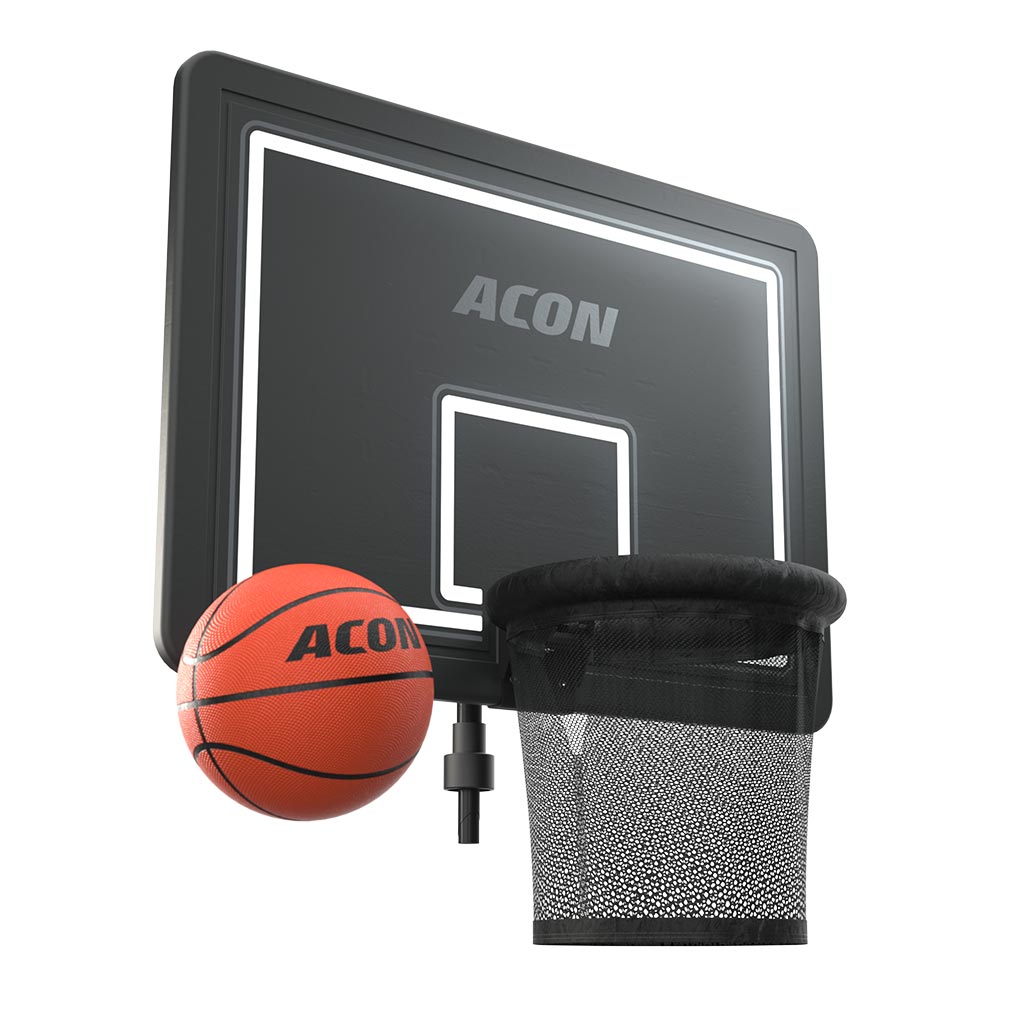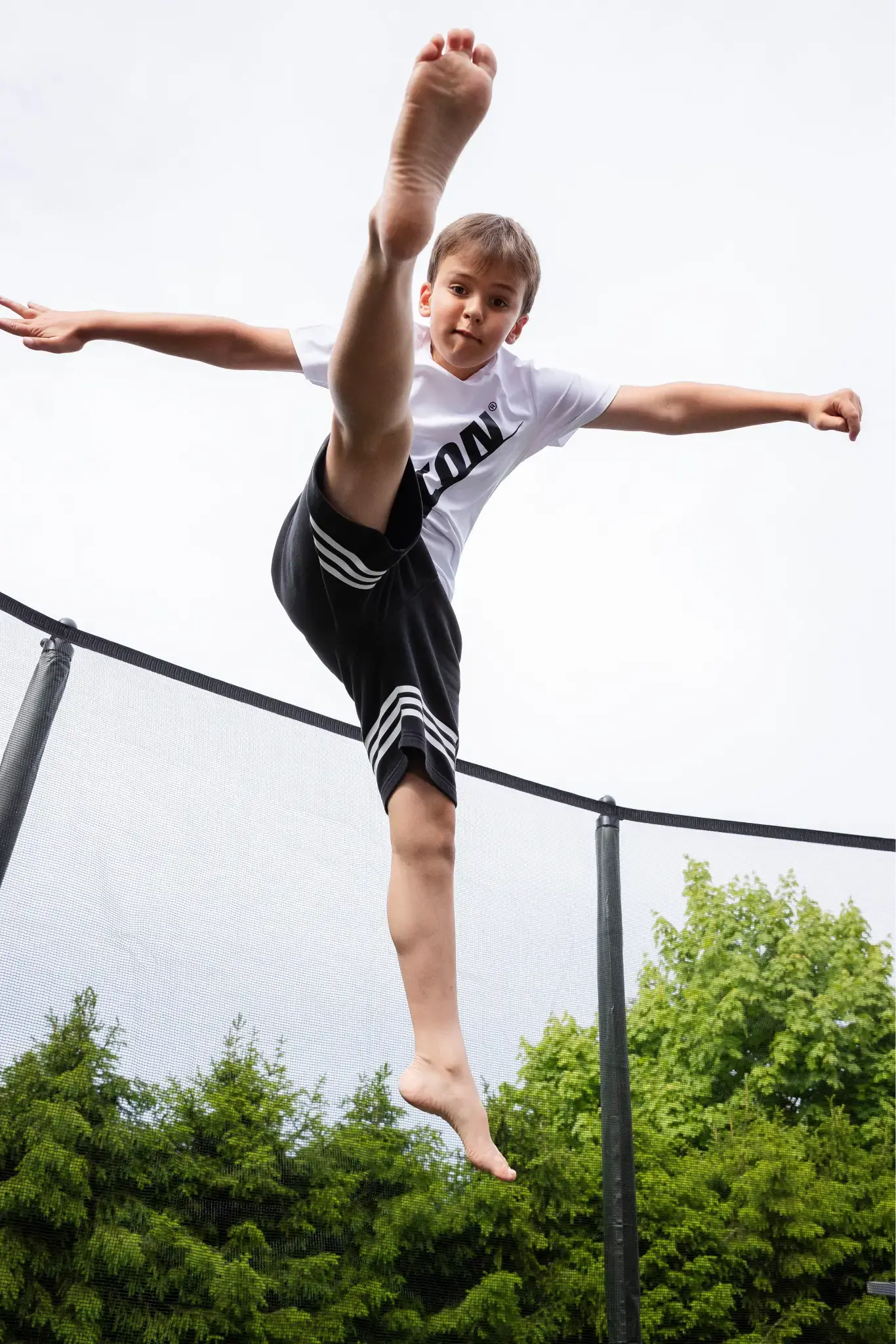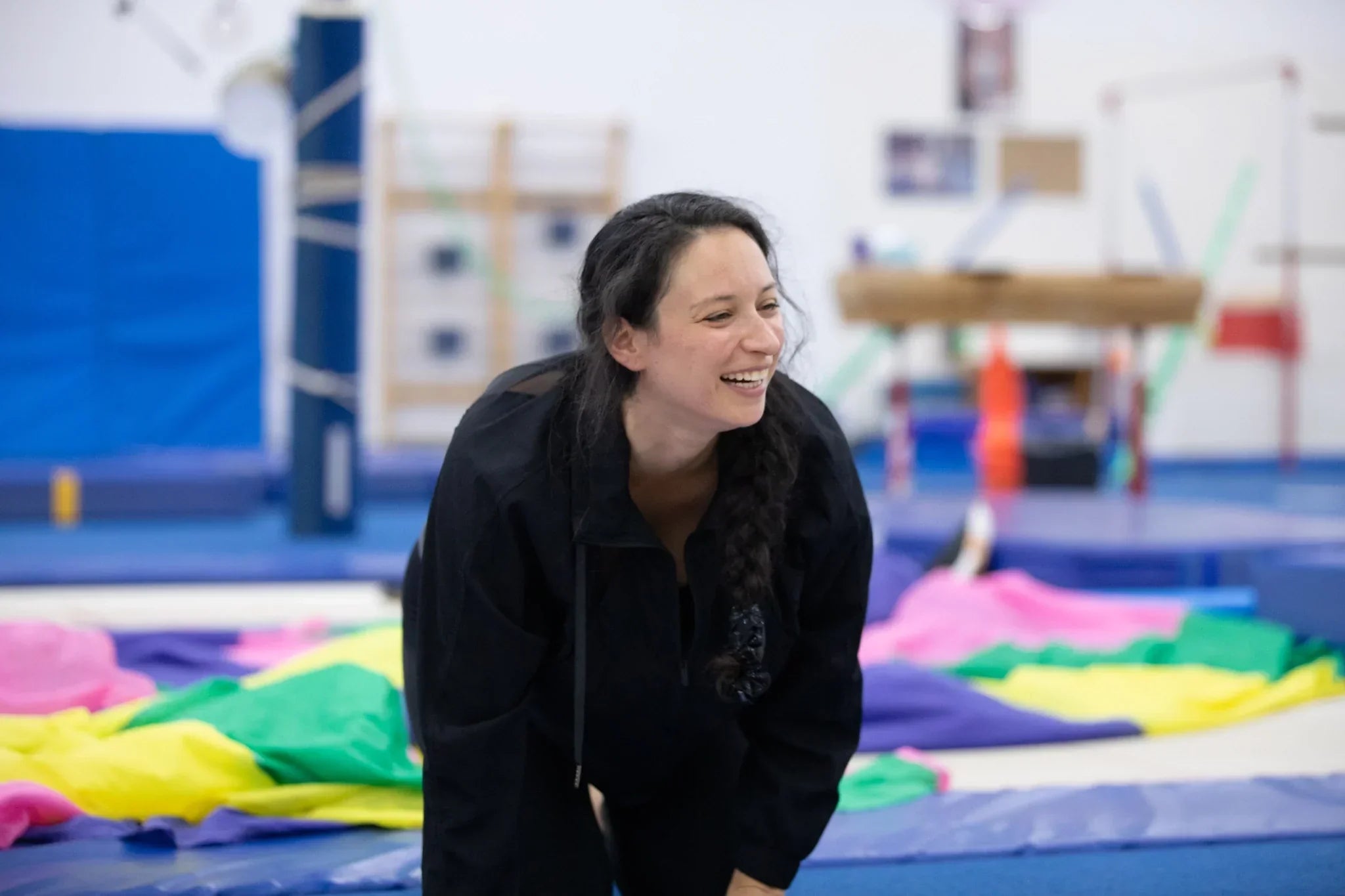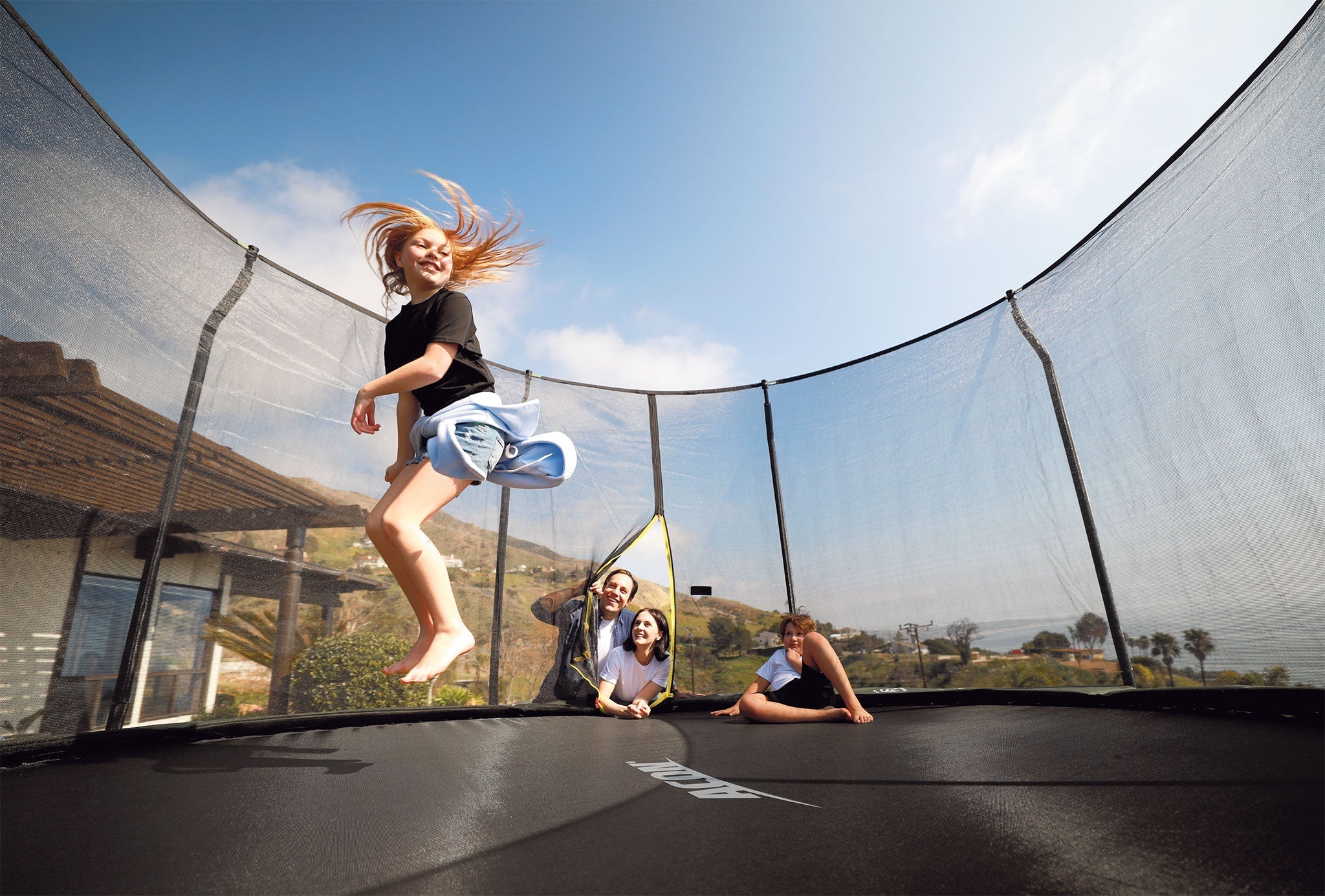Distributacon Inc.
1250 Wayzata Blvd E Unit 1127,
Wayzata, MN 55391, USA
Importance of Motor Skill Development
In childhood, motor skills are foundational to a wide range of abilities. Gross motor skills, such as balance and coordination, help children with physical tasks, from running to climbing, while fine motor skills, like hand-eye coordination, enable more detailed movements, such as writing and drawing. Research shows that physical activities can drive growth in these areas, contributing to a healthy balance between physical, cognitive, and social development. As kids jump and play on trampolines, they actively engage muscles and coordination systems, which has been linked to improved balance, coordination, and proprioception (the body’s ability to perceive its position in space). These benefits of trampolining can have a significant impact on the child's physical and mental health in the long-term. Trampolining supports a child’s motor skills when they are younger, and the activity can help older kids build motor skills as well.
How Trampolining Enhances Gross Motor Skills
Jumping on a trampoline strengthens the core, legs, and back, helping build balance and stability. Jumping also forces the brain to coordinate the body in real-time, enhancing coordination skills in a fun, pressure-free way. Research shows that exercises like these, which involve balance and rhythmic movement, stimulate neural pathways associated with balance and coordination, often resulting in better body control. For children facing physical or developmental delays, trampolining can create positive, repetitive experiences that improve confidence and motor ability over time.
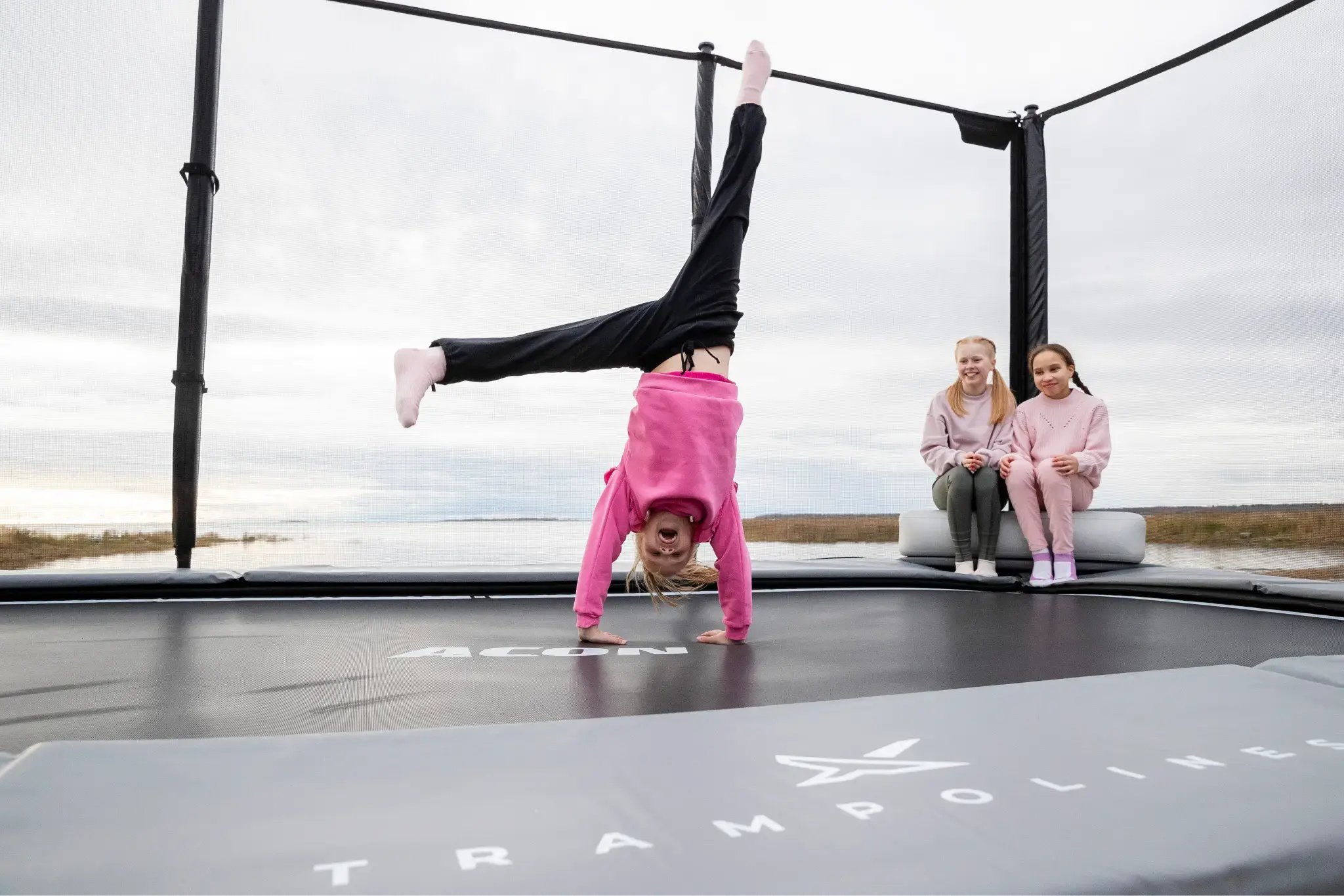
Benefits for Fine Motor Skills and Spatial Awareness
For fine motor development, trampoline exercises for kids that involve catching or balancing objects (like bean bags or softballs) can improve hand-eye coordination and spatial awareness. The repetitive, rhythmic bouncing provides a unique sensory experience that helps build an understanding of space and timing – skills important in academic and athletic contexts. Games that involve reaching, tossing, or balancing items mid-bounce encourage the integration of fine and gross motor skills.
Cognitive Benefits
In addition to physical benefits, trampolining offers significant cognitive rewards. Studies indicate that physical activities, especially those that require coordination and focus, can boost brain function by encouraging neural connections in areas of the brain responsible for focus, memory, and spatial awareness. Trampolining requires the brain to continually adjust balance and trajectory, which promotes spatial and perceptual skills. Furthermore, exercise has been shown to release endorphins, which can improve mood and increase attention span – both beneficial for school-age children.
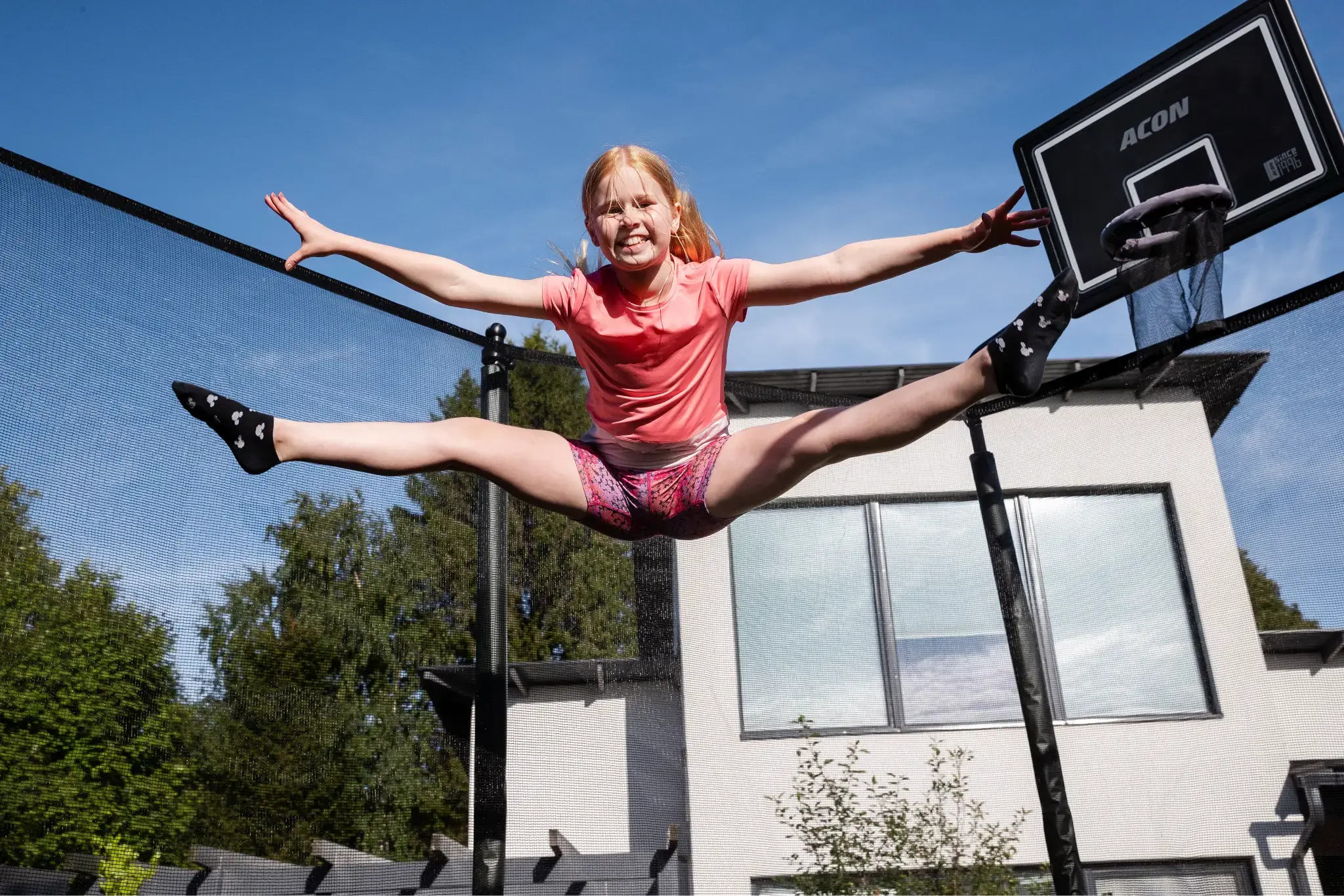
Social and Emotional Growth
Socially, trampolining can be a group activity, providing children with opportunities to interact, communicate, and engage in cooperative play. Participating in group activities, like the trampoline, can increase self-confidence, support teamwork, and boost social interaction skills. Cooperative play on trampolines can also foster resilience, as children try new challenges and support each other, enhancing their sense of achievement.
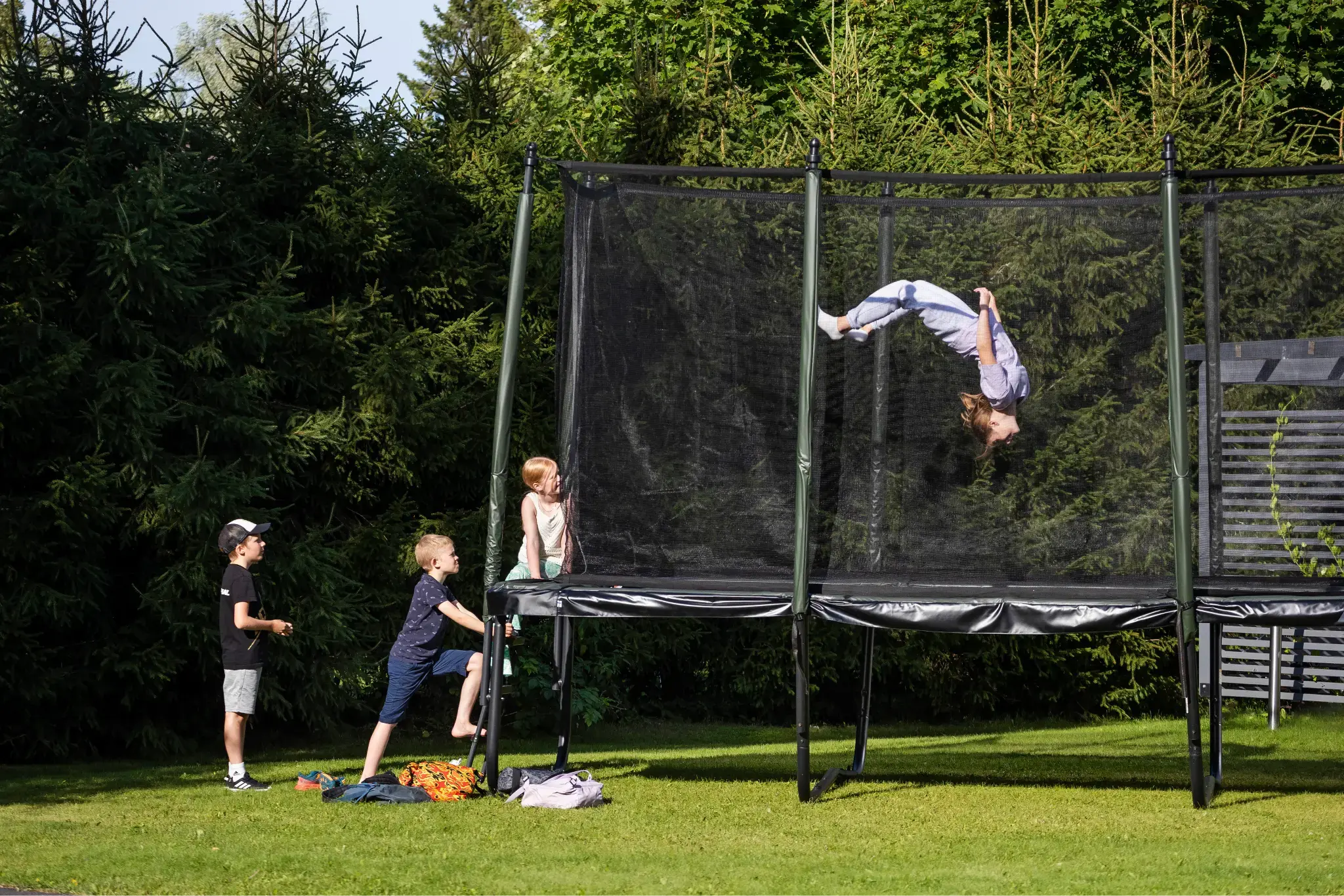
Frequently Asked Questions
Can Trampolines Boost a Toddler’s Development?
Yes, trampolines offer toddlers a fun way to develop basic motor skills. While supervision and safety are key, gentle bouncing can improve coordination, strength, and body awareness.
How Does a Trampoline Help with Gross Motor Skills?
Jumping and balancing on a trampoline requires coordination and muscle engagement, which strengthens core and limb muscles, while also training balance and spatial awareness.
What Are the Benefits of Trampolining?
Trampolining supports physical development, cognitive growth, and social interaction. It can boost coordination, balance, emotional regulation, and self-confidence in children of all ages.
Conclusion
Trampolining isn’t just about jumping – it’s a comprehensive activity that supports children’s development across physical, cognitive, and social domains. Incorporating trampolining into play or therapy provides children with both immediate enjoyment and long-term developmental benefits. If you're looking for a high-quality trampoline for kids that supports safe and effective skill development, consider investing in a durable and well-designed model.
Why ACON?
As a pediatric physical therapist and adaptive gymnastics instructor, I’ve worked with many different trampolines, and I can confidently say that not all trampolines are created equal. ACON trampolines stand out for their stability and safety, which is so important when working with kids. Some of the other brands of trampolines I’ve come across tend to sway during use, and that instability can make kids (and parents) hesitant to use them. In my experience, when the bounce doesn’t feel right or isn’t enjoyable, the trampoline often gets left unused after the novelty wears off.
But that’s not the case with ACON trampolines. Their bounce is smooth, responsive, and honestly, just fun – which means kids keep coming back to them. At the therapeutic nature farm where I work, we have a few different brands available, and most of the time, my clients naturally gravitate toward the ACON X. It’s easy to see why – it feels sturdy and safe, and it’s a joy to jump on. I’ve even seen whole neighborhoods gather around an ACON trampoline once one’s been set up.
And one of my favorite parts, that is not offered on ANY other trampoline is the Smart Corners. I call them “connection corners” because they create a perfect space for kids to sit safely inside the net while waiting their turn or just hanging out together. It’s little details like that which make such a big difference.




